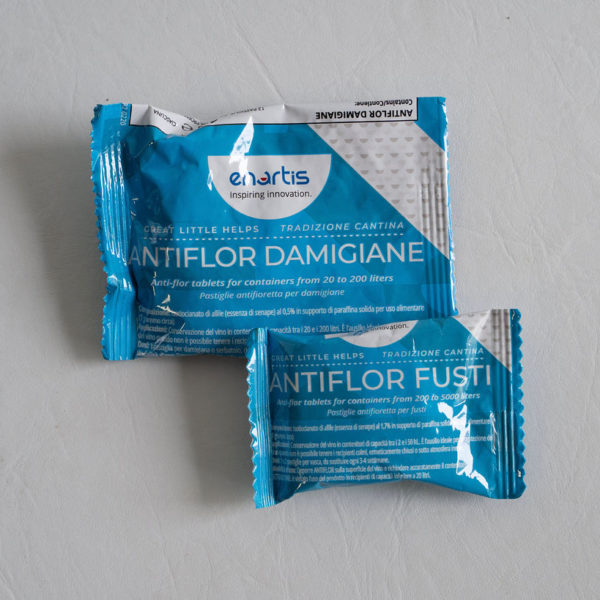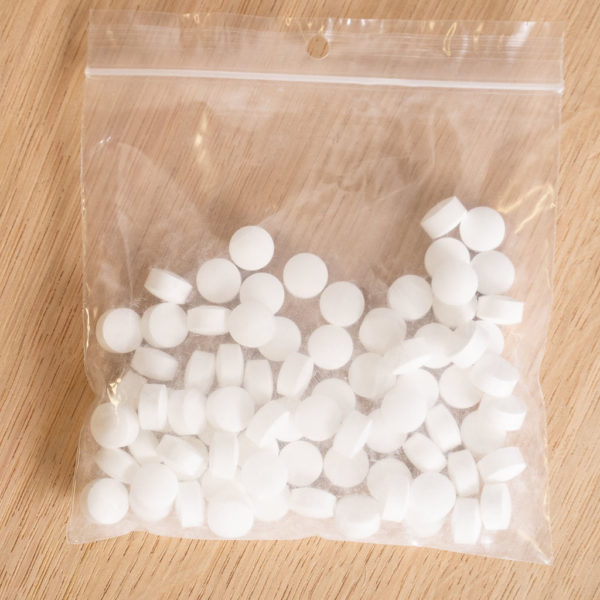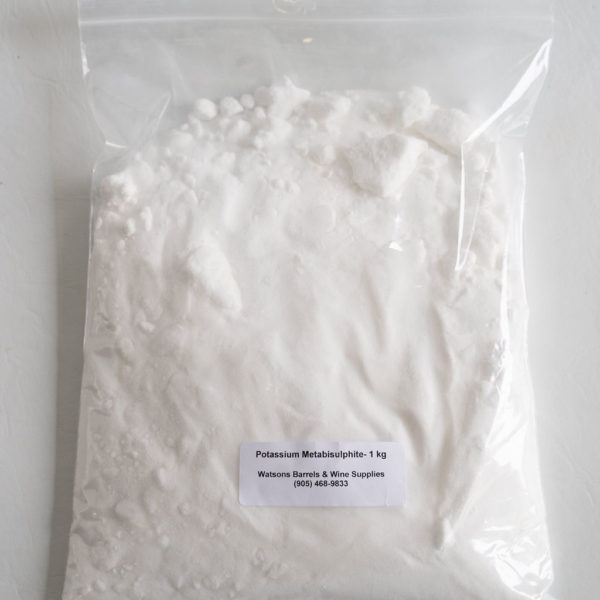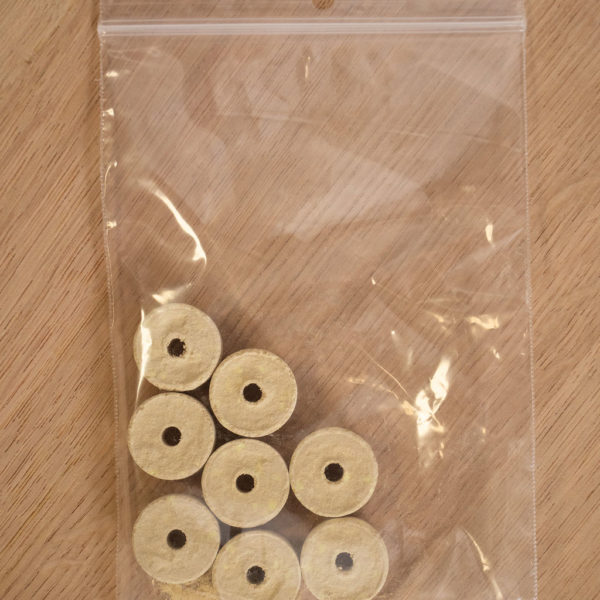Sulphur Dioxide
Sulphur Dioxide (SO2): Sulphur dioxide inhibits yeast and bacterial growth and acts as an antioxidant in wine. These benefits are realized from the presence of molecular SO2 which occurs in free SO2. As a general rule, about one-half of the SO2 added to wine is present as free SO2, and the remainder occurs as bound SO2. Between 0.5 and 0.8 ppm of molecular SO2 is required to prevent spoilage and oxidation. It is important to note that the proportion of molecular SO2 in free SO2 decreases as the pH of the wine increases. The amount of free SO2 needed to achieve a molecular SO2 of 0.5 ppm and 0.8 ppm at various pH values is provided below:
Free SO2 cannot be added directly to wine. Potassium metabisulphite (k, meta) contains about 57% total SO2, of which about 25 to 30% is free SO2. Campden tablets contain about 48% T SO2 or about 22-26% free SO2 Sulphur sticks which are burned, produce about 130 to 140% SO2 by weight. The proportion of free SO2 in total SO2, is also pH dependent with a greater percent available at lower pH. The following calculation can be used to estimate the amount of potassium metabisulphite to add to a wine to achieve a desired free SO2 concentration:
K, meta (g) = free SO2 desired (ppm) x volume of wine (L) x 3.6
1,000
Following addition for SO2 and an equilibration period of 3 to 5 days, it is recommended that the resulting free SO2 concentration be established using an SO2 test kit. The value should then be adjusted accordingly.




